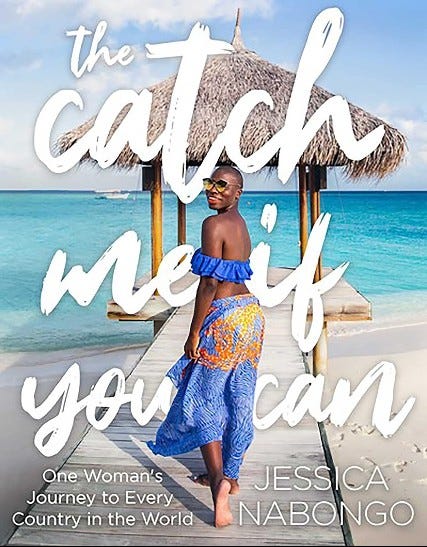Social media: The pen pals we’re using wrong
An argument for why teachers should let students use their smartphones more — and wiser

Editor’s Note: This blog has been updated and the original version was published on Our Ancestories, the blog site for author Ekiuwa Aire, who has written “Njinga of Ndongo and Matamba” and “Idia of the Benin Kingdom: Workbook.”
Toledo, Ohio. Los Angeles, California. Birmingham, Alabama. Houston, Texas. Nassau, Bahamas. London, England. Ghana and Nigeria in Africa. Those are just a few among many places where I had a total of 50 pen pals before I started my sophomore year of high school.
Geriatric Millennials (born between 1980 to 1985) know exactly what pen pals are and the way we went about getting them. There were pen pal requests in teen music and pop culture magazines. Preteens and teenagers would send out requests to write letters to people from all over the world, and I answered plenty of them throughout my elementary school years.
Although a few of my relatives thought it was strange to write to absolute strangers, my parents and older brother supported my interest in meeting new people. The only objection was from a friend of my older brother’s after seeing I was writing to two teens (charged as adults) in out-of-state prisons.
The issue wasn’t the pen pals; it was the other people in the prison or juvenile detention centers who would have access to my mailing address and photos. I was disappointed in his friend’s advice (interestingly someone who had also been released from prison) to stop writing them because I learned quite a bit about the criminal justice system from their letters, but I wrote one final letter explaining why communication had to cease. Both boys understood.
Almost knocking on 40 years old, I still have all of those pen pal letters in one of four decorative storage boxes filled so high that I had to tape them closed. These four boxes are the equivalent of printing out a few years’ worth of the average Gen Z user’s status updates from social media friends and comment sections. But one of the major differences between my box of letters and social media is what I wish more people would consider doing: I purposely chose to write to people who I had very little in common with (other than enjoying the same magazines) because I wanted to learn about someone new.
Recommended Read: “Critical debate: The graduation requirement we should have ~ What a space technology debate taught me about balance”
Is the “well-traveled” traveler just looking for images of self?
I run into adults all of the time who brag about how well-traveled they are. (This too often means they’ve been to Paris or went to a tourist-filled safari in Africa.) And every time someone goes off on a tangent about how people should travel the world more and expand their minds, I immediately ask who they met on their trips. There’s an interesting pattern: the same “travelers” spent most of their time with other tourists and immediately glued themselves to anyone who came from their own hometowns. Or, they went to another country or continent and immediately looked for people who looked, walked and talked like them.
ADVERTISEMENT ~ Amazon
As an Amazon affiliate, I earn a percentage from purchases with my referral links. I know some consumers are choosing to boycott Amazon for its DEI removal. However, after thinking about this thoroughly, I want to continue promoting cool products from small businesses, women-owned businesses and (specifically) Black-owned businesses who still feature their items on Amazon. As of the first date of Black History Month 2025, each new post will ALWAYS include a MINIMUM of one product sold by a Black-owned business. (I have visited the seller’s official site to verify that Amazon Black-owned logo.) I am (slowly) doing this with older, popular posts too. If you still choose to boycott, I 100% respect that decision.

I was perplexed by a news editor I met who went to Asia and complained that “no one spoke English.” Imagine going to a whole other continent and then getting mad that English is not the primary language. (Fun fact: The United States does not have an official language either.) Meanwhile, during my elementary school and college years, I purposely befriended Mexican, Guatemalan and Puerto Rican students to improve my Spanish. My habit of trying to meet people unlike myself never dwindled away.
And on social media, the pattern is the same. I am intrigued by people who I can learn from as much if not more than those who fit my survey demographics. When I travel anywhere, I stay away from tourists, especially anyone from Chicago. (If I wanted to talk to people in Chicago, I’d have stayed home.)
How teachers can make students’ social media expand their minds
Not every student has the financial income to travel. Some may luck out and have parents who are financially well off. Others may be able to see the world via foreign exchange programs and/or athletic scholarships. But what about those who don’t? How can they “travel” without traveling? How can they learn more about what’s happening outside of their neighborhoods?

Social media (Facebook, Twitter, Pinterest, Snapchat, Instagram) are all places to help students travel without physically going anywhere (especially in our socially isolating world of COVID-19 and the delta variant). Oddly though, for too many youth, it’s still the same clique-ish lunchroom tables in a digital verse. Too often, students will flock to following the lives of celebrities who will never talk to them or their friends who they sit next to in a classroom. Their entire world is just the people in front of them.
Sometimes the clique is unconscious, and sometimes it’s very much on purpose and indignant. I distinctly recall one college peer complaining about why a language class was mandatory to graduate from undergrad. In his opinion, learning anything but English was pointless and he had no desire to meet anyone who didn’t speak it. As you can imagine, he was a tiki torch carrier before his time.
But what about that student their own age who lives in a whole other state, country or continent? What are they up to? What are their concerns? What world issues affect them that the U.S. student can relate to? Those were all questions I had as a pen pal. I already knew what was going on in Chicago, but what music did my Ghanian friend listen to? What was the dating scene like for dark-skinned black girls in London? I have not visited nearly as many places as I have had pen pals, but for the price of a stamp, I was able to get first-person points of view about how people felt about any issue I asked about.
Recommended Read: “Condoleezza Rice is getting my tuition funds back ~ Critical Race Theory and her anti-“feel-bad” stance for white kids”
ADVERTISEMENT ~ Amazon
As an Amazon affiliate, I earn a percentage from purchases with my referral links.

Educators should take more advantage of social media in the classroom, especially history teachers, political science teachers and Creative Writing teachers. Ask students to follow at least a handful of people their age from other countries and/or continents. Choose topics to converse about. Have them report back to the class about a world news issue overseas or a social justice cause. Unlike the overly used “How I spent my summer vacation” assignments, social media is a place where memories can be made for the long term and the lessons learned from them will stay in a student’s head permanently.
The tools are already accessible and (usually) free. Educators already grow frustrated by students sneaking and staring at their phones throughout class. Why not make the most of it? Find a way to teach a child while letting them do something they already want to do: study their smartphones. Show them how to be world travelers, finding the digital pen pals they may not know they needed, along with the lessons that come from it.
Did you enjoy this post? You’re also welcome to check out my Substack columns “Black Girl In a Doggone World,” “BlackTechLogy,” “Homegrown Tales,” “I Do See Color,” “One Black Woman’s Vote” and “Window Shopping” too. Subscribe to this newsletter for the weekly posts every Wednesday. Thanks for reading!




